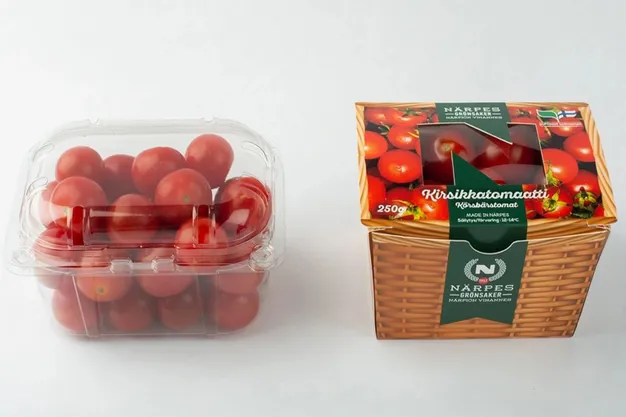In a notable exploration of packaging sustainability, Metsa Board and Narpes Grönsaker, a Finnish vegetable cooperative, embarked on a study to assess cherry tomato packages made of paperboard against those crafted from recycled PET plastic. This investigation delves into aspects such as consumer perceptions, food waste, and climate impact, highlighting the evolving landscape of food packaging preferences influenced by environmental and safety considerations.
The findings underscored a strong consumer preference for paperboard packaging, with 67% favoring the paperboard carton featuring a transparent window for product visibility. The study, conducted by The Natural Resources Institute of Finland (Luke), disclosed no significant difference in the shelf life of cherry tomatoes packaged in paperboard compared to rPET, with paperboard sometimes outperforming its plastic counterpart. Moreover, the climate impact assessment revealed that the carbon footprint of the rPET package was sixfold that of the paperboard option.
The transition towards paperboard packaging in the food sector is propelled by its renewable origins, high recyclability, and the ability to offer comparable preservation qualities to plastic, without compromising on safety standards. Despite the global complexity of food packaging regulations, innovations in paperboard technology continue to enhance its barrier properties and aesthetic appeal, positioning it as a viable and preferred choice for both brands and consumers aiming for sustainability without sacrificing functionality.
Source: packagingdigest.com

